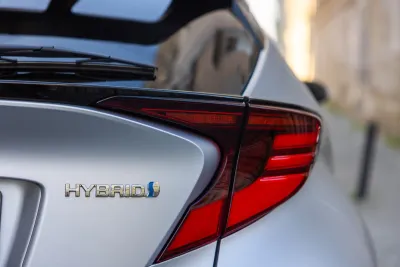Soaring global demand for Toyota's hybrid vehicles is straining the automaker’s supply chain, leading to widespread delays as component shortages and limited production capacity challenge its ability to keep up.

Toyota is facing significant global delivery delays for its hybrid vehicles due to a surge in demand outpacing supply, causing months-long waits for customers across major markets including the U.S., Japan, Europe, China, and India. The hybrid boom has validated Toyota’s long-standing strategy of investing in gasoline-electric vehicles, even as some competitors bet on a full shift to battery-electric models. However, the surge has placed immense pressure on Toyota’s supply chain, with key components like hybrid motors and inverters in short supply due to production bottlenecks at suppliers such as Aisin and Denso.
The shortage is compounded by limited production capacity and dependency on parts manufactured in Japan and China, which are then shipped abroad for vehicle assembly. Delays of several months are common for popular models like the Prius, Camry Hybrid, Yaris Cross, and RAV4 plug-in. In India, customers have faced delivery windows of up to nine months, though Toyota has made efforts to expand production locally. Meanwhile, Toyota is exploring new suppliers and considering in-country production of critical components like inverters to ease the strain.
To address the growing demand, Toyota has added manufacturing capacity in India and invested $14 billion in a new battery plant in North Carolina. Hybrids now make up a significant portion of Toyota’s vehicle output in key markets, including nearly half of all vehicles assembled in the U.S. in 2024. While competitors like Hyundai and Honda are also struggling to keep up with hybrid demand, Toyota's continued growth in electrified vehicle sales — particularly in China — suggests hybrids remain a strong and resilient alternative amid a cooling electric vehicle market.
FULL STORY: Dude, where's my car? Toyota buyers face long waits amid hybrid boom

Alabama: Trump Terminates Settlements for Black Communities Harmed By Raw Sewage
Trump deemed the landmark civil rights agreement “illegal DEI and environmental justice policy.”

Planetizen Federal Action Tracker
A weekly monitor of how Trump’s orders and actions are impacting planners and planning in America.

The 120 Year Old Tiny Home Villages That Sheltered San Francisco’s Earthquake Refugees
More than a century ago, San Francisco mobilized to house thousands of residents displaced by the 1906 earthquake. Could their strategy offer a model for the present?

San Francisco Opens Park on Former Great Highway
The Sunset Dunes park’s grand opening attracted both fans and detractors.

Oregon Legislature to Consider Transit Funding Laws
One proposal would increase the state’s payroll tax by .08% to fund transit agencies and expand service.

Housing Vouchers as a Key Piece of Houston’s Housing Strategy
The Houston Housing Authority supports 19,000 households through the housing voucher program.
Urban Design for Planners 1: Software Tools
This six-course series explores essential urban design concepts using open source software and equips planners with the tools they need to participate fully in the urban design process.
Planning for Universal Design
Learn the tools for implementing Universal Design in planning regulations.
Clanton & Associates, Inc.
Jessamine County Fiscal Court
Institute for Housing and Urban Development Studies (IHS)
City of Grandview
Harvard GSD Executive Education
Toledo-Lucas County Plan Commissions
Salt Lake City
NYU Wagner Graduate School of Public Service





























